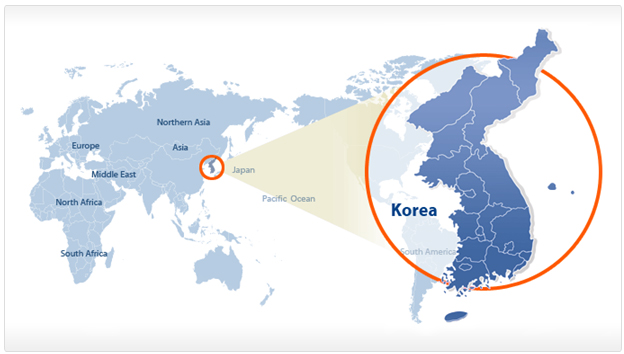|
|
|
|
 |
| About Korea |
 General Information > About Korea |
 |
| Korea, traditionally known as the Land of the Morning Calm, is today a modern, bustling hub of East Asia. It is a peninsula jutting off of China, and Japan is only two hours away. Despite this close physical proximity to the neighboring countries, Korea has a distinctive culture of its own, which has developed during its 5,000 years of history. Visitors can expect to meet a lively population with its own language, writing system, architecture, cuisine, and many other manifestations of a unique cultural heritage. |
| Language |
| Hangeul was invented in 1443, during the reign of King Sejong. It is composed of 10 vowels and 14 consonants. Hangeul has 11 compound vowels, 5 glottal sounds. The chart below represents the 24 Hangeul letters and their romanized equivalents. 'The Hunminjeongeum,' a historical document which provides instructions to educate people using Hangeul, is registered with UNESCO. UNESCO awards a 'King Sejong Literacy Prize', every year in memory of the inventor of Hangeul. |
| English |
Korean |
Korean Pronunciation |
| How are you? |
안녕하세요? |
Aan-nyeong-haseyo? |
| Thank you. |
감사합니다. |
Gamsa-haam-nida. |
| Yes. |
예. |
Ye. |
| No. |
아니요. |
Aniyo. |
| I am sorry. |
미안합니다. |
Meean-hamnida. |
| I enjoyed the meal. |
잘 먹었습니다. |
Jal mugut-sum-nida. |
| Please give me some more of this. |
이것 더 주세요. |
Yigut du juseyo. |
| The check, please. |
계산서 주세요. |
Gye-saanseo juseyo. |
| Do you take credit cards? |
카드로 계산할 수 있습니까? |
Card-ro gyesaan halsu it-seub-nee ka? |
| How much is it? |
얼마입니까? |
Ulma-eem-neeka? |
| It is ________ won. |
_________ 원 입니다. |
_________ won eem-needa. |
| 5,000 |
오천 |
O-cheon |
| 10,000 |
만 |
Maan |
| 15,000 |
만오천 |
Maan-o-cheon |
| 20,000 |
이만 |
Yi-maan |
| 30,000 |
삼만 |
Saam-maan |
| Where is the rest room ? |
화장실 어디입니까? |
Hwa-jangsil udee-eem-nee ka?? |
| Goodbye. |
안녕히 계세요. |
Aan-nyeonghee gyeseyo |
|
| Capital City-Seoul |
 |
Seoul is the capital of Korea with over 600 years of history. It is the heart of Korea’s culture and education as well as politics and economics. Seoul is home to many old historic sites like Gyeongbokgung and Changdeokgung Palaces, and places of traditional culture like Bukchon Hanok Village, Insa-dong, and Namdaemun Market. The shopping and entertainment districts of Myeongdong and Apgujeong, and Asia's largest underground shopping center COEX Mall also draw a large number of tourists every year. The Hangang River, which runs through the center of the city, is also a distinctive landscape of Seoul that offers a myriad of resting areas for citizens.
For more information, [click] here |
| Climate |
The Republic of Korea lies between 38ºN and 33ºN latitude and 126ºE to 132ºE longitude. The country has a continental climate of very cold, dry winters and very hot, humid summers. Winters are influenced by westerly winds from Siberia and the Mongolian plateau, while summers are generally characterized by an oceanic climate due to moist, warm winds from the Pacific Ocean. Korea has four distinct seasons, though spring and autumn tend to be short. Spring comes in early April and lasts throughout May. The hot and humid summer begins in June and lasts about four months.
The summer rainy season lasts from the end of June to mid July. Summer ends in late September, giving way to crisp, clear autumn days that last until the end of October. It becomes colder in November, and a very cold, bleak winter sets in during December and lasts until the end of February. |
| Month |
Jan. |
Feb. |
Mar. |
Apr. |
May. |
Jun. |
Jul. |
Aug. |
Sep. |
Oct. |
Nov. |
Dec. |
| Temperature |
-2 |
-2 |
5 |
12 |
17 |
22 |
26 |
28 |
21 |
10 |
5 |
-4 |
|
|
 |
|
|
|
|
|